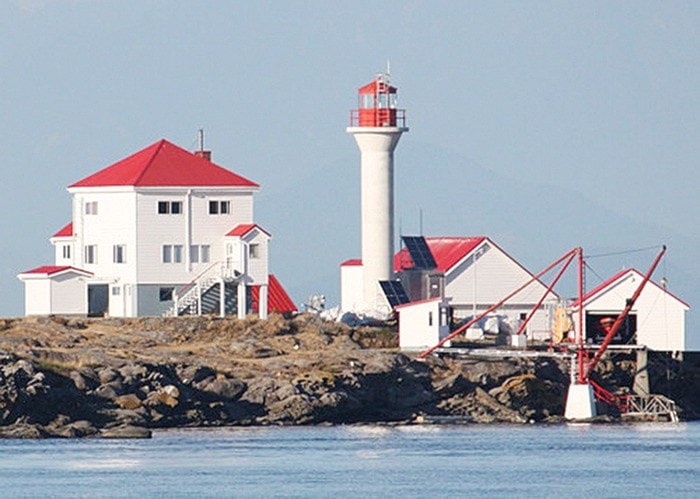Quadra Island director Jim Abram is crediting the federal government’s decision to retain lightkeepers with saving nine lives last week.
The lightkeeper at the Entrance Island lighthouse off Nanaimo helped rescue a group whose boat had overturned in rough seas August 25. The lightkeeper spotted the craft, got in his own boat and raced to the scene, pulling all nine from the water.
Abram, a former Cape Mudge lightkeeper, said that had the government chose to de-staff lightstations as was planned in 2011, the group may not have been so fortunate.
“We have nine people who are alive today because we have lightkeepers there,” Abram said. “It’s very, very important to have the eyes out there and in this case, have the physical body there to pluck them out of the water.”
Lt. Paul Pendergast, navy public affairs, said that according to the log at the Joint Rescue Coordination Centre in Victoria, the group’s vessel starting taking on water and as it filled, it capsized, sending all nine occupants into the water. The log states that “the lighthouse keeper rescued all persons from the water and transferred them to the Nanaimo Port Authority vessel Eagle. The Eagle then transferred two hypothermic patients to the (hospital).”
The incident occurred at 1:40 p.m. last Monday about one nautical mile north east of Entrance Island.
Abram said those rescued are living proof of the importance of lightkeepers.
“It’s an essential service – it shouldn’t be discontinued no matter what government comes in,” Abram said, alluding to next year’s scheduled federal election.
With his time spent manning the Cape Mudge lighthouse, Abram knows first-hand the valuable role lightkeepers play in keeping boaters safe.
“There are logs of incidents year after year that happened there,” Abram said. “In the 18 years I was a lightkeeper it tells of numerous times people were in trouble and the lightkeeper responded. From off that tower, you can see 15, 20 miles.”
But while the arguments for retaining lightkeepers may seem obvious, the federal government has tried more than once to de-staff lightstations on cost-saving recommendations from the Coast Guard.
The latest attempt was in 2010 (the first in 1995) but was quashed by the Canadian government in March 2011 following a report and recommendation from a Senate Standing Committee.
That committee visited lightstations on both coasts, including the Cape Mudge lighthouse on Quadra Island. Senators heard repeatedly that lightkeepers are “the eyes and ears” of the coast, particularly in remote areas.
“The report came out, and they got it,” Abram said. “They really did get it and it was so refreshing for us as lightkeepers to hear that someone in the federal government finally got it, they understood they had been misled by Coast Guard bureaucrats.”
And the good news did not stop there.
The Fisheries and Oceans minister at the time, Gail Shea, put a halt to the de-staffing and months later, new minister Keith Ashfield told Coast Guard not to bring the issue forward again.
Abram said he hopes the issue has been permanently put to rest.
“You can never have a maximum number of people doing this job,” Abram said. “It takes so little time for a tragedy to happen. All it takes is one little slip of a steering wheel for a boat to flip over. The whole thing about keeping staff at lightstations – it’s absolutely essential.”
